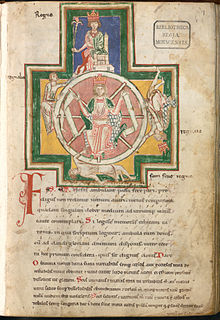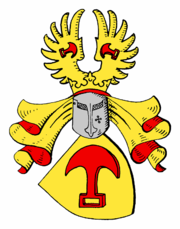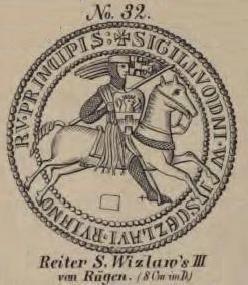
Reinmar von Brennenberg (or Reinmar der Brennenberger) was a minnesinger and ministerialis to the Bishop of Regensburg in the 13th century.

Reinmar von Brennenberg (or Reinmar der Brennenberger) was a minnesinger and ministerialis to the Bishop of Regensburg in the 13th century.
The family were ministeriales in the Upper Palatinate in the service of the bishops of Regensburg. They took their name from Brennberg. There were altogether four people with the name "Reinmar von Brennberg." Which of these four was the minnesinger is not altogether clear; however, it is generally believed that the minnesinger refers to Reinmar II von Brennberg, who was documented in 1224-1236 and died between 1271 and 1275. Reinmar II was not murdered, as was depicted in the image from the Codex Manesse, but his son Reinmar III was in 1276.
His Minnelieder are among those associated with courtly traditions, and are close to Ulrich von Singenberg, Reinmar von Hagenau, Heinrich von Morungen and Walther von der Vogelweide in style. In total five songs from Reinmar survive, four Kanzonen in bar form and a Spruchton with at least 12 strophes.

The Codex Manesse is a Liederhandschrift, the single most comprehensive source of Middle High German Minnesang poetry, written and illustrated between c. 1304 when the main part was completed, and c. 1340 with the addenda.

Carmina Burana is a manuscript of 254 poems and dramatic texts mostly from the 11th or 12th century, although some are from the 13th century. The pieces are mostly bawdy, irreverent, and satirical. They were written principally in Medieval Latin, a few in Middle High German and old Arpitan. Some are macaronic, a mixture of Latin and German or French vernacular.

Minnesang was a tradition of lyric- and song-writing in Germany and Austria that flourished in the Middle High German period. This period of medieval German literature began in the 12th century and continued into the 14th. People who wrote and performed Minnesang were known as Minnesänger, and a single song was called a Minnelied.

Walther von der Vogelweide was a Minnesänger who composed and performed love-songs and political songs ("Sprüche") in Middle High German. Walther has been described as the greatest German lyrical poet before Goethe; his hundred or so love-songs are widely regarded as the pinnacle of Minnesang, the medieval German love lyric, and his innovations breathed new life into the tradition of courtly love. He was also the first political poet to write in German, with a considerable body of encomium, satire, invective, and moralising.

Wiesloch, is a town in northern Baden-Württemberg, Germany. It is situated 13 kilometres south of Heidelberg. After Weinheim, Sinsheim and Leimen it is the fourth largest town in the Rhein-Neckar-Kreis. It shares Wiesloch-Walldorf station with its neighbouring town Walldorf. Also in the vicinity of Wiesloch are Dielheim, Malsch, Mühlhausen, Rauenberg and Sankt Leon-Rot.

Süßkind von Trimberg is given as the author of six poems in the Codex Manesse. The poems date to the second half of the 13th century, and if their purported author is historical, he would be the first documented Jewish poet of the German language.

Heinrich von Morungen or Henry of Morungen was a German Minnesinger.

Der von Kürenberg or Der Kürenberger was a Middle High German poet and one of the earliest Minnesänger. Fifteen strophes of his songs are preserved in the Codex Manesse and the Budapest Fragment.

Dietmar von Aist was a Minnesinger from a baronial family in the Duchy of Austria, whose work is representative of the lyric poetry in the Danube region.

Reinmar von Zweter was a Middle High German poet of Spruchdichtung. The iconography in the Manesse Codex suggests that he may have been blind, since he is the only person represented in the manuscript with closed eyes and other people writing. The caption, not shown here, of that miniature refers to him as "Herr" Reinmar, implying that he was a knight and that he became blind in adulthood.

Reinmar von Hagenau was a German Minnesänger of the late twelfth century who composed and performed love-songs in Middle High German. He was regarded by his contemporaries as the greatest Minnesänger before Walther von der Vogelweide, a view widely shared by modern scholars. Although there are uncertainties as to which songs can be reliably attributed to him, a substantial body of his work — over 60 songs — survives. His presentation of courtly love as the unrequited love of a knight for a lady is "the essence of classical Minesang".

Franckenstein is the name of a feudal, Franconian noble family in Germany, descendants from the Lords of Lützelbach from Höchst im Odenwald, respectively their offsprings, the Dynasts of the Breuberg family.

Vitslav III (1265/8–1325), variously called Vislav, Vizlav, Wislaw, Wizlaw and Witslaw in English sources, was the last Slavic ruler of the Danish Principality of Rugia. He is often identified with the author of the Minnesinger Vitslav of the Jenaer Liederhandschrift.

Albrecht von Rapperswil is one of the Minnesingers featured in the Codex Manesse. He was a ministerialis in the service of the counts of Rapperswil, in the rank of a marchschal. Albrecht is depicted in Codex Manesse fol. 192v in the act of jousting. Three songs attributed to him are recorded on fol. 193r. The songs are in three verses, with the first verse of each describing nature in springtime, and the second and third verse dedicated to the beauty of the beloved lady.

Stadeck was an important family of ministeriales in Styria during the 13th and 14th centuries.
The Manesse Verlag is a German publishing house for classical literature, founded in 1944 in Zürich in Switzerland. It belongs today to Random House publishing group based in Munich. The publishing house is mainly known for its library of world literature. It also publishes first and new translations of classical works. Manesse is directed by Horst Lauinger.

Meinloh von Sevelingen was a 12th Century Minnesänger from Swabia and one of the earliest poets in the tradition.

The Kleine Heidelberger Liederhandschift is a collection of Middle High German Minnesang texts. In Minnesang scholarship it is referred to as MS. A. It is held by the Heidelberg University Library with the signature Cod.Pal.germ. 357.

The Burggraf von Rietenburg was a Middle High German lyric poet in the Minnesang tradition. He was probably the younger brother of the Burggraf von Regensburg. All seven of his surviving stanzas are concerned with courtly love.

The Burggraf von Regensburg was a Middle High German lyric poet who wrote Minnelieder. In his four surviving stanzas, love is not yet courtly love. In one, strongly contrary to later courtly convention, the woman serves the man. All his stanzas are preserved in two manuscripts, the 13th-century Kleine Heidelberger Liederhandschrift and the 14th-century Codex Manesse.
{{citation}}: CS1 maint: ref duplicates default (link); ( full text online )